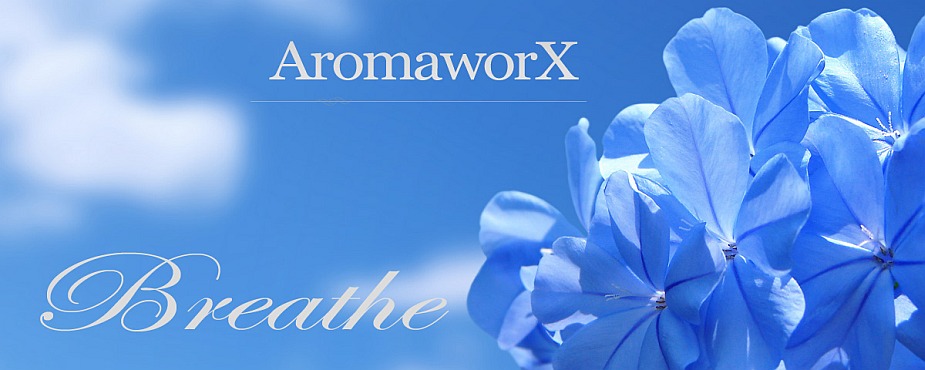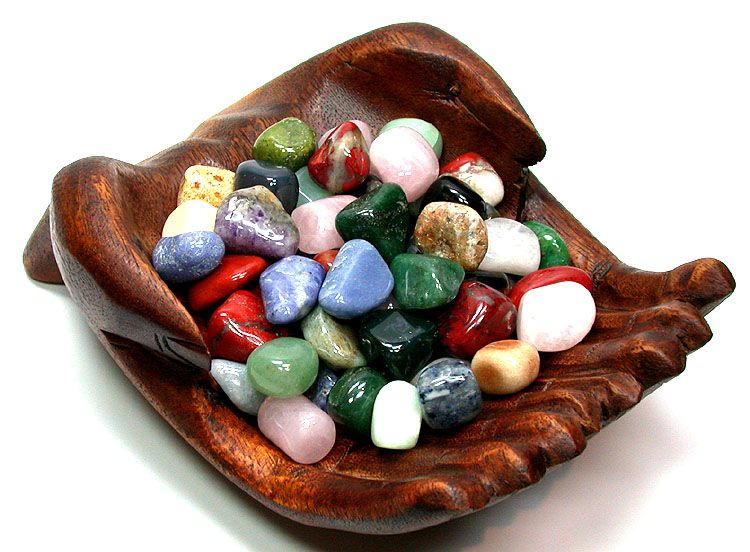Ayurveda - What is Ayurveda?
- Details
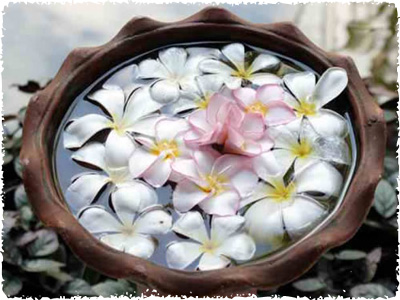
Considered by many scholars to be the oldest healing science, Ayurveda is a holistic approach to health that is designed to help people live long, healthy, and well-balanced lives. The term Ayurveda is taken from the Sanskrit words ayus, meaning life or lifespan, and veda, meaning knowledge. It has been practiced in India for at least 5,000 years and has only recently became popular in Western cultures.
The "contemporary" form of Ayurvedic medicine is mostly derived from several sacred Indian texts which were written in Sanskrit between 1500 BC and 400 AD. The basic principle of Ayurveda is to prevent illness by maintaining balance in the body, mind, and consciousness through proper drinking, diet, and lifestyle, as well as herbal remedies.
There are two main types of Ayurveda: traditional and Maharishi. The latter is a version of traditional Ayurveda based on translations from the classical texts by Maharishi Mahesh Yogi. Both types of Ayurvedic practitioners prescribe herbs, believe that disease results from an imbalance in the doshas (see below), and use many of the same remedies for treating illness. Maharishi Ayurveda, however, stresses the role of supreme consciousness in maintaining good health, and promotes Transcendental Meditation (TM) as a method for experiencing the pure consciousness of the universe. Maharishi Ayurveda also highlights the need to express positive emotions and to attune your life to the natural rhythms of the body.
How does it work?
Just as everyone has a unique thumbprint, according to Ayurvedic beliefs, each person has a distinct pattern of energy -- a specific combination of physical, mental, and emotional characteristics. It is also believed that there are three basic energy types called doshas, present in every person:
-
Vata-energy that regulates bodily functions associated with motion including blood circulation, breathing, blinking, and the beating of the heart. When vata energy is balanced, there is creativity and vitality. Out of balance, vata produces fear and anxiety.
-
Pitta-energy that governs the body's metabolic systems including digestion, absorption, nutrition, and body temperature. In balance, pitta promotes contentment and intelligence. Out of balance, pitta can cause ulcers and arouse anger.
-
Kapha - energy that controls growth in the body. It supplies water to all body parts, moisturizes the skin, and maintains the immune system. In balance, kapha is expressed as love and forgiveness. Out of balance, kapha leads to insecurity and envy.
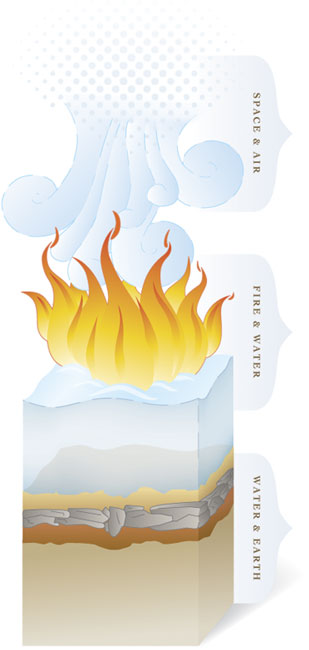 All people have vata, pitta, and kapha,but usually one or two are dominant in a given individual. Many factors can disturb the dosha balance such as stress, an unhealthy diet, the weather, and strained family relationships. Such disturbance is expressed in the body as disease. Ayurvedic practitioners prescribe treatments designed to bring the doshas back into balance.
All people have vata, pitta, and kapha,but usually one or two are dominant in a given individual. Many factors can disturb the dosha balance such as stress, an unhealthy diet, the weather, and strained family relationships. Such disturbance is expressed in the body as disease. Ayurvedic practitioners prescribe treatments designed to bring the doshas back into balance.
From a Western medical perspective, relief of stress appears to be one of the ways that Ayurveda works to help fight illness. For example, studies have found that Transcendental Meditation, a component of Maharishi Ayurveda, reduces anxiety. Other studies have found that Ayurveda lowers blood pressure and cholesterol, slows the aging process, and speeds recovery from illness.
The herbs used in Ayurvedic medicine often have antioxidant effects, which means that they may help protect against the damage from free radicals (by-products of normal metabolism in the body) like long term illnesses such as heart disease and arthritis. Many Ayurvedic practitioners also recommend a vegetarian diet, which is believed to be better for your heart than diets containing red meat.
What should I expect from an Ayurvedic treatment?
Ayurvedic treatment focuses on rebalancing the doshas. On your first visit, the practitioner will take a detailed medical history, check your pulse, palpate your abdomen, examine your tongue, eyes, nails, and skin, and listen to the tone of your voice. He or she will also ask you questions about your general state of health with special focus on your lifestyle, diet, habits, and environmental surroundings.
Based on this assessment, he or she will then make recommendations on how to restore your natural dosha balance, which almost always includes changes in lifestyle, particular diet. Practitioners draw from more than 20 types of treatment, but the most commonly prescribed include:
 Pranayama - breathing exercises. Practicing pranayama generates feelings of calmness.
Pranayama - breathing exercises. Practicing pranayama generates feelings of calmness.
Abhyanga - rubbing the skin with herbalized oil (usually sesame oil is the base) to increase blood circulation and draw toxins out of the body through the skin.
Rasayana - using mantras (repeated words or phrases) during meditation combined with specific herbs to rejuvenate a person.
Yoga - combining pranayama, movement, and meditation. Has been shown to improve circulation and digestion, and to reduce blood pressure, cholesterol levels, anxiety, and chronic pain.
Pancha karma - cleansing the body of toxins to purify the body and reduce cholesterol. Practitioners use methods to induce sweat, bowel movements, and even vomit in an effort to cleanse the body of toxins.
Herbal medicines - prescribing herbs to restore dosha balance.
What is Ayurveda good for?
The goal of Ayurvedic medicine is to prevent diseases before they occur. Studies have suggested that Ayurveda may be particularly effective at reducing the risk of heart disease. For example, a recent study found that this traditional Indian medicine helped reduce plaque and reverse the thickening of artery walls known as atherosclerosis in both healthy adults as well as adults at high risk for heart disease. (Atherosclerosis is a slow, complex disease in which fatty substances, cholesterol, cellular waste products, calcium, and other substances build up in the inner lining of an artery. This build-up, also known as plaque, can lead to heart attack and stroke.)
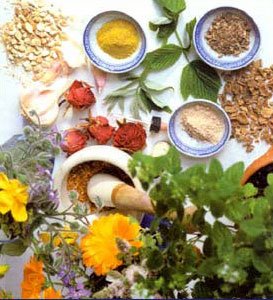
Combining yoga with an Ayurvedic herbal remedy containing Winter cherry (Withania somnifera ), Boswellia (Boswellia serrata ), and Turmeric (Curcuma longa ) can reduce pain and disability if you have arthritis.
A number of Ayurvedic herbal remedies have been evaluated for their beneficial effects. For example, Guggulipid (Commiphora mukul ), a traditional Ayurvedic medication used to treat high cholesterol, is widely used in India. It appears to effectively lower cholesterol by blocking the production of cholesterol in the liver.
Similarly, fenugreek (Trigonella foenum graecum ) seeds can decrease LDL cholesterol and triglycerides, and increase HDL cholesterol levels. These effects seem to be due to reduced intestinal absorption of cholesterol, and may be related to the high fiber content of the seed. Fenugreek seeds may also help control your blood sugars if you have diabetes, again because of the high fiber content.
Other Ayurvedic herbs are being studied as treatments for Alzheimer's disease, anxiety, asthma, dementia, dysmenorrhea (painful menstruation), herpes, high blood pressure, Parkinson's disease, perimenopausal problems, and premenstrual syndrome, amongst many other conditions. Ayurvedic herbs combined with conventional medications may also be helpful for acne, chronic constipation, chronic fatigue syndrome, irritable bowel syndrome, obesity, and uterine fibroids.
Are there any risks?
Most Ayurvedic therapies, such as pranayama and rasayana, are unlikely to have adverse side effects. Ayurvedic herbs, however, may interact with medications. In addition, one review found that some Ayurvedic herbs contain mercury that can produce skin lesions; mercury can also raise blood pressure. Be sure to consult your doctor before trying Ayurveda, especially if you take medicines or have certain dietary restrictions such as with diabetes.
For a list of supporting research on this article, visit:
www.umm.edu/altmed/articles/ayurveda-000348.htm
Liked this article? Dive deeper into personal growth and wellness! Check out CrystalWind.ca for spiritual wisdom or explore AromaWorx.ca for natural well-being tips. Spread the positivity—share this with friends on their happiness journey!
Let’s Chat! Drop Your Thoughts Below! ![]()
Disclaimer Health
All post and information provided within this blog is for educational and informational purposes only, and is not to be construed as medical advice or instruction. No action should be taken solely on the contents of this website. Please consult with your healthcare professional before making any dietary or lifestyle changes or taking supplements that may interfere with medications. Any products or information discussed are not intended to diagnose, prevent, treat or cure any illness, disease or lifestyle. Please consult your physician or a qualified health professional on any matters regarding your health and wellbeing or on any opinions expressed within this website.
Latest Articles

Imagine a world of inspiration and healing, free for all—made possible by YOU!
Donate Now—Ignite the Magic at CrystalWind.ca!

Epilepsy - Finding A Cure
Your donation can make a difference!
Help us find a cure – donate now!
Unlock Your Light: Join Lightworkers Worldwide on CrystalWind.ca!
Articles: Ayurveda
Follow Us!
Featured This Month
Mabon in Modern Times: Fresh Takes on the Au…
The Mabon season begins somewhere around the 21st-22nd of September and cont... Read more
Peridot: The Healer's Stone
Peridot has been used as a Power Stone for centuries. Peridot fosters emotio... Read more
Mabon Magic: Ideas For Fall Decoration And R…
Welcome (almost!) to Fall! We’re turning the Great Wheel once again, toward ... Read more
Watermelon Tourmaline
Synonym: Rainbow Tourmaline The watermelon tourmaline is a rare variety t... Read more
Virgo Mythology
The Virgo Myth In all of constellation mythology, few legends are as misund... Read more
Sun in Virgo
An Overview of Sun Sign Characteristics for Virgo Virgo is guided by Mercur... Read more
The Vine: September 2nd - September 29th
The Autumnal Equinox ( Alban Elfed ) Celtic Symbol : The White Swan Read more
Crystals for Virgo
As the warmth of summer begins to soften into the crispness of autumn, the Sun... Read more
Sweet Violet
Sweet Violet Faithfulness and modesty. “I will always be true to you.” Helps... Read more


